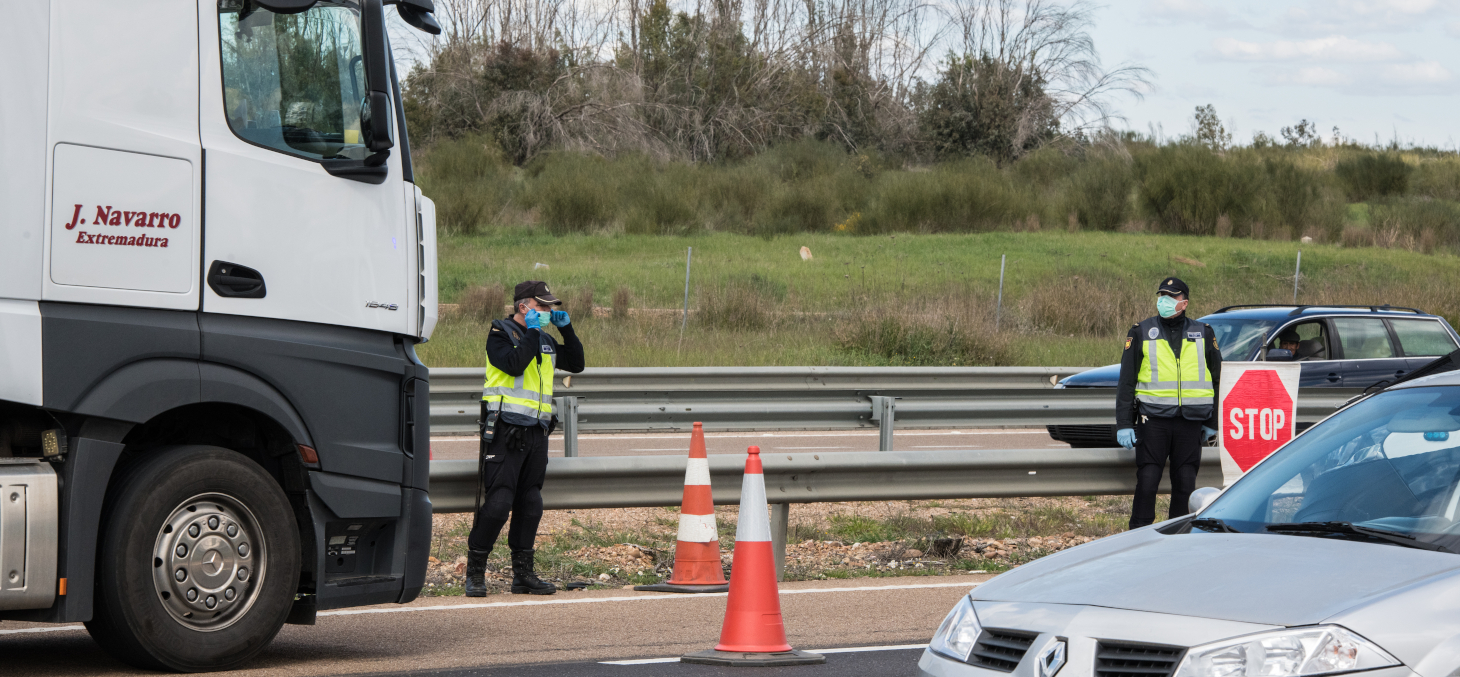What parallel can be drawn between the Schengen countries' management of the migrant crisis in 2015 and their response to the current health epidemic?
In
Fear in Western Countries, a remarkable book first published in 1978, the French historian Jean Delumeau highlighted two phenomena that underlie collective behaviour: invasion and disease. In less than five years, Europe had to tackle both – the migrant crisis of 2015 and the Covid-19 epidemic of 2020. The comparison in terms of crisis management is striking.
Migrant crisis and health crisis: two rapid and far-reaching phenomena
The seriousness and scale of both phenomena are striking. In 2015, the European Union had to deal with a massive and unprecedented influx of non-European migrants. According to a Frontex report, more than 1.8 million crossings were recorded that year. While it is difficult to put a figure on the Covid-19 epidemic given its evolving nature, the disease poses a serious crisis in terms of its scale. According to the regional director of the World Health Organisation, Europe is currently regarded as the centre of the pandemic of coronavirus.
The speed of the phenomena and the lag in the political response should be noted. The European Parliament sounded the alarm on the migration crisis in a resolution approved after a European Council meeting on April 23, 2015. However, the EU did not mobilise itself substantially until after the informal meeting of Heads of State and Government on September 23, 2015. By mid-October, that public action was effectively structured around the implementation of short- and medium-term measures – for example acceleration of the deployment of crisis management centres, the hotspots, in Greece and Italy.
At first glance, the Covid-19 epidemic presents similar characteristics – a rapid acceleration followed by a late political reaction. The meeting of EU heads of state and government didn’t take place until March 17, 2020, at the request of the President of the Republic, even though Italy had established a “protected area” targeting 15 million inhabitants on March 9, 2020.
What re-establishment of boundaries?
The comparison does not end there. The EU witnessed disorderly decisions of individual member states to seal off the internal borders of the Schengen area, both in 2015 and 2020. Political leadership in Brussels was caught off guard by the resurgence of travel restrictions during the Covid-19 spreading across Europe. According to the Schengen Borders Code, member states are entitled to reintroduce police controls at the border within the Schengen area, in particular for a “threat to public health”. However, the code does not as such provide for the re-establishment of borders on such grounds.
Nevertheless, the European Commission accepts an interpretation from a public health perspective, while recalling the importance for member states not to apply any measure that could jeopardise the integrity of the single market for goods, particularly with regard to supply chains. Rather, the disorganized movement as part of unilateral closure of internal borders within the Schengen area – that is to say, without consultation – infringes the code despite the commission’s flexible interpretation. Here again, the progressive re-establishment of border controls in disarray is reminiscent of those of 2015, in violation of the provisions of the code as revised at the end of the 2011 migration crisis.
Under-utilisation of existing means
Yet another point of convergence between the two events is the under-utilisation of existing European instruments. In 2015, member states had to faced up with the influx of migrants, yet were slow in deploying EU tools related to civil protection, among others. In 2020, the European Centre for Disease Prevention and Control (ECDC), which is the European structure responsible for the early detection of emerging epidemic threats to the EU, was not sufficiently supplied with health data by the member states.
To put it another way, this reflects the prevalence of individual and uncoordinated responses to health emergencies. Italy deplored the refusal of France and Germany to send masks and denounced the EU’s lack of solidarity. When a shortage of face masks gravely affected France, the country’s border guards stopped two trucks carrying 130,000 of them bound for the UK health care service, sparking anger in the UK.
Here again, the re-partitioning of the Schengen area is a symptom of member states’ individual management of the crisis. In 2015, those situated downstream on the Balkan migration route (successively Northern Macedonia, Serbia and Hungary) allowed the transit of migrants through their territory, leaving the responsibility for settling the migration issue to the states situated upstream (successively Serbia, Hungary and Austria). This was what the European Commission had termed a laissez-passer policy. Consequently, downstream states introduced controls to block the flows of migrants at their southern borders. This lack of coordination brought about a bottleneck at the border, tasking the upstream state – Serbia in the example of the Hungarian border – with the management of the massive influx of migrants at a portion of its northern border.
What division of competences between the EU and the Member States?
This lack of solidarity is aggravated by the fact that migration policies competences (in the sense of entry and residence of more than three months) are not conferred upon the Union and its action is strictly constrained within the provisions of the Treaty on the Functioning of the EU (TFEU). Member states have not made the same choices, to say the least: Germany had, for a time at least, opted for a more open policy, while Poland, Hungary, the Czech Republic and Slovakia were hostile to any admissions.
In current situation, member states control the choices to be made in their fight against the Covid-19 epidemic – the Union cannot impose any specific options upon them. Although there seems to be some convergence, the Netherlands and Sweden have opted for distinct health choices. Despite the April 15 joint European roadmap intended to enhance the coordination between member states on the lifting of Covid-19 containment measures, the de-escalating process is going forward in disarray. Indeed, it seems that the pandemic is afflicting not only European citizens, but also European solidarity.
Are we therefore heading toward an institutional crisis on the same scale as that of 2015? While the crisis is undeniable, the EU appears to have learned the lessons of the migration crisis. Indeed it is important to note that the process of building the Union’s response is more rapid. This is reflected in the measures identified by the Council of Health Minister on March 13, as well as the aforementioned Commission guidelines adopted on March 16, which are intended to both issue a wide range of recommendations in the field of public health and strengthen the external borders by applying a temporary ban on travel to the EU for a period of 30 days (since prolonged). This stringent restriction is one of the five priorities identified by the European Council on March 17. Moreover, much improvement have been made, for instance the new project of reinforcement of the Union Civil Protection Mechanism or the impending activation of the emergency funds. The goal is to create medical supplies at the European level to provide assistance to any affected member states and to support the administration of large-scale application of medical tests.
Nevertheless, all these measures can’t really paper over the need for solidarity: unlike the declaration of the European council promoting a better co-ordination between Member States, some of them are currently discussing of an intra-Schengen border lift selection beneficial to central and eastern EU countries, paving the way for a bilateral system of pick-and-choose tourist migration during this summer.**
“By failing to prepare, you are preparing to fail”, as Benjamin Franklin wrote. The health public choices leading to unpreparedness for the pandemic and competition between member states in terms of medical supplies, the crying need for solidarity and the blatant lack of coordination impairing a forceful political response, all these aspects must be scrutinised, but in the future.
As the European Council president, Charles Michel, stated, we have to stay focus on the fight against the virus. “The debate is not institutional: when the house burns down, we don’t have to shilly-shally about the water bill”.
Cet article est republié à partir de The Conversation sous licence Creative Commons. Lire l’article original.


